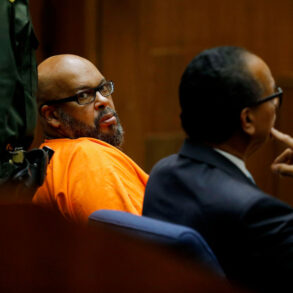
In the early ’90s, a beat echoed through the basement of a home in Oakland. It played all night, left looping on equipment rarely left behind. The next morning, Tupac Shakur walked in, heard the track, and asked a simple question: “Who made this?”
That question changed everything for music producer Truman Jefferson, now known to many by the nickname Tupac gave him— “Big Tru.” It also marked the beginning of a creative partnership that helped shape one of the most influential voices in hip hop history.
That beat became “Representin’ 93,” a standout cut from Tupac’s second album, “Strictly 4 My N.I.G.G.A.Z…” Released in 1993, the album solidified Shakur’s status as more than just a rising star—it revealed an artist with depth, urgency, and a powerful message.
For Jefferson, it was the moment his career and Tupac’s path crossed in a way neither of them could have fully predicted.
“When he first said he wanted the beat, I didn’t believe him,” Jefferson recalled. “You hear that stuff all the time. But then Treach from Naughty by Nature and Pac showed up to get the tape. That’s when I knew it was real.”
Related Stories:
https://lasentinel.net/ebony-blake-casts-her-spell-at-the-pantages-as-hermione-granger.html
Jefferson had come up in church, with a broomstick as his first makeshift instrument, followed by a guitar and organ gifted by his father.
That foundation, rooted in rhythm and soul, laid the groundwork for a production style that Tupac was instantly drawn to. “I always tell people—music is transcendent. It moves you, changes your day. That’s what it did for us.”

From the moment they connected, Jefferson says Tupac was all energy, all instinct. “He would write full songs—hook, verses, all of it—in ten minutes. Then we’d bounce, hit Roscoe’s, hit the clubs. Being around him felt like a nonstop party.”
Still, their bond ran deeper than the fun. Jefferson remembers Tupac’s work ethic, his emotional intensity, and his ability to switch between personas depending on who was around. “On the radio, he’d sound like a scholar. Off air, it was straight hood. He could code-switch like nobody I’d ever seen.”
Despite a few disagreements—including a heated argument over a nightclub encounter that led Jefferson to nearly pull his song from the album—their friendship always endured. “We got into it, no doubt,” Jefferson said. “But by the next day, everything was cool again. That’s just the kind of bond it was.”

When Tupac was shot in 1996, Jefferson, like many others, believed he’d survive. “Everybody thought he’d pull through. He was that tough. That determined.” But when a Tupac song came on the radio, Jefferson pulled over and cried. “I just knew.”
In the years since, Jefferson has worked across photography, modeling, and multimedia. But his connection to Tupac remains a defining thread in his creative life.
He’s currently developing a documentary and book—”Representin’ 93″—featuring never-before-seen studio footage and stories that offer a more personal view of the artist the world came to idolize.

With June 16th marking what would have been Tupac Shakur’s 54th birthday, Jefferson reflects on his friend’s legacy with quiet reverence. “Pac was a once-in-a-lifetime artist. I didn’t know how big he’d get. He did. He saw it all coming.”
Asked what he wants the world to remember about Tupac, Jefferson is clear: “His drive. His passion. His ability to make people feel something. Even now, decades later, the music still hits just like it did the first time.”
In his basement studio all those years ago, Truman Jefferson left a beat playing. Tupac listened—and felt it. Today, the world still listens.
This post was originally published on this site be sure to check out more of their content.




